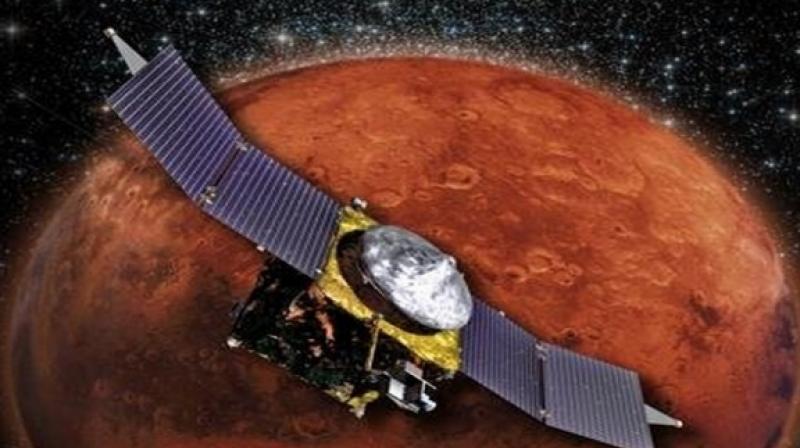NASA's MAVEN detects metal atoms in Martian atmosphere

Mars has electrically charged metal atoms high in its atmosphere, according to new data from NASA's MAVEN spacecraft which can unveil previously invisible activity in the mysterious electrically charged ionosphere of the red planet.
MAVEN (Mars Atmosphere and Volatile Evolution Mission) is exploring the Martian upper atmosphere to understand how the planet lost most of its air, transforming from a world that could have supported life billions of years ago into a cold desert planet today. Understanding ionospheric activity may shed light on how the atmosphere on Mars is lost to space, researchers said.
"MAVEN has made the first direct detection of the permanent presence of metal ions in the ionosphere of a planet other than Earth," said Joseph Grebowsky of NASA's Goddard Space Flight Centre in the US. "Because metallic ions have long lifetimes and are transported far from their region of origin by neutral winds and electric fields, they can be used to infer motion in the ionosphere, similar to the way we use a lofted leaf to reveal which way the wind is blowing," said Grebowsky.
The metal comes from a constant rain of tiny meteoroids onto the red planet. When a high-speed meteoroid hits the Martian atmosphere, it vaporises. Metal atoms in the vapour trail get some of their electrons torn away by other charged atoms and molecules in the ionosphere, transforming the metal atoms into electrically charged ions.
MAVEN has detected iron, magnesium, and sodium ions in the upper atmosphere of Mars over the last two years using its Neutral Gas and Ion Mass Spectrometer instrument, giving the team confidence that the metal ions are a permanent feature. "We detected metal ions associated with the close passage of Comet Siding Spring in 2014, but that was a unique event and it didn't tell us about the long-term presence of the ions," said Grebowsky. The interplanetary dust that causes the meteor showers is
common throughout our solar system, so it is likely that all solar system planets and moons with substantial atmospheres have metal ions, according to the team.
Sounding rockets, radar and satellite measurements have detected metal ion layers high in the atmosphere above Earth. There has also been indirect evidence for metal ions above other planets in our solar system. When spacecraft are exploring these worlds from orbit, sometimes their radio signals pass through the planet's atmosphere on the way to Earth, and sometimes portions of the signal have been blocked.
This has been interpreted as interference from electrons in the ionosphere, some of which are thought to be associated with metal ions. However, long-term direct detection of the metal ions by MAVEN is the first conclusive evidence that these ions exist on another planet and that they are a permanent feature there.
The research was published in the journal Geophysical Research Letters.

